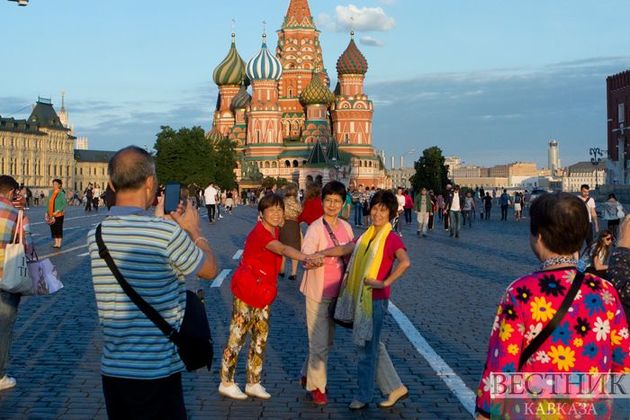After spending more than two decades in shadows since the dissolution of Soviet Union, Russia is emerging again on the Asian landscape as a force to reckon with. With the recent Taliban (banned in Russia) takeover in Afghanistan post the U.S. withdrawal, Russia is back in Central Asia to fortify its status as the leading security provider in the region.
For Southeast Asia, Modern Diplomacy writes, Russia has become the leading arms exporter, and for West Asia, Russia has already carved a sphere of influence since successfully intervening in the Syrian conflict and saving President Assad’s regime from toppling attempts backed by the west. Further, Moscow wants to mediate on the issue of denuclearisation of the Korean peninsula through discussions rather than western centric sanctions-based approach, and is keen to attract Japanese, South-Korean, and Indian investments in its Far East region to propel development. With Beijing, Moscow has developed deep strategic relations and the two neighbours now see their interests converge in several sectors.
The growing importance of Indo-pacific
For a long time, West Asia (or Middle East) remained the focus of the western world due to its oil and gas resources. But in recent years, as the U.S. achieved self-sufficiency in oil, Russia ramped up its own production capabilities under Putin and Iran’s oil production got restricted due to sanctions over its alleged nuclear programs, the attention of the global economy has shifted to the Indo-Pacific region. Today, Indo-pacific consists of some of the world’s fastest growing economies and more than 60 percent of world population. While Russia and China see the Indo-pacific concept as a western project to counter China’s rise, both have come up with their own strategies to ramp up efforts to integrate with not only the Indo-pacific (or Asia-pacific), but also the broader Eurasian region.
How Russia is pivoting to Asia
The Eurasian Economic Union (EAEU) and the International North South Transport Corridor (INSTC) have been two of the most focused projects by Moscow. They not only provide access to previously lesser accessed Asian markets like Iran and India through direct connectivity, but also help in countering China’s Belt and Road Initiative, which if left unchecked, might establish Chinese hegemony in all the markets Russia hopes to penetrate. In 2020, 49.3 percent of Russia’s exports by value went to Europe whereas Asia took 42.2 percent. The biggest markets in Asia for Russian exports consisted of China, Kazakhstan, South Korea, and Japan. It is expected that the trend of increasing exports to Asia is going to continue as Russia increases both connectivity through various routes like INSTC, the Northern Sea Route, and the Chennai-Vladivostok Maritime Corridor, as well as reaches Free Trade Agreements (FTAs) with various Asian nations either bilaterally or under the EAEU system. To this end, Russia is already negotiating FTAs with countries like Iran, Singapore, Thailand, and India, and is conducting trade under FTAs with Vietnam.
Besides being the leading arms exporter to many countries, especially China and India, Russia has also been a major oil and gas exporter in Asia. Although trade in energy resources is still small in case of major defence trade partner like India due to connectivity issues, the upcoming transport corridors are expected to improve this situation. However, an increasingly interesting development has been Russia’s diversification in its export basket. As the world grapples with the realities of climate change, Russia has started taking steps to mitigate its over-reliance on energy exports. Exports like wheat, pork and chicken have made progress in recent times and Russia is hoping to exploit the agricultural capacity of its Far Eastern region by seeking investments and human resources from India.
The China Factor
A rising China is acting both as a boon and a curse for Russia when it comes to expanding Russian influence in Asia. While Moscow almost automatically gains an important mediatory role in any conflicts between China and a third country, especially in Asia, it is also wary of the fact that an encircling of the Indo-pacific region by western players is bound to become more prominent if Chinese actions which come off as hegemonic, continue unabated. As Moscow might not be tempted to intervene in any conflict between China and any country beyond diplomatic means, the smaller Asian nations would find no other solution than to look towards U.S. and Europe for countering China. In a way, the shaping of the QUAD grouping which recently held its first formal meeting, has already signalled the geopolitical tensions that are rising in the region.
Post-2014 conflict with Ukraine, and the sanctions that followed, Russia has looked towards import substitution through the Asia pivot. Moscow replaced plans for purchasing Ukrainian made gas turbines for guided-missile frigates by a contract with India to develop the frigates. Russia also preferred Indian chipsets for its new generation satellites. Further, Russia has looked towards China for buying machinery, reducing dependence on countries like Germany, and is coordinating with China for establishing its 5G network. Russia has also highlighted its plans for attracting investments from countries like India, South Korea, and Japan, as well as joint efforts for utilising the Far East region’s resources, for shipbuilding and for seeking latest technologies that do not fall under the ambit of western sectoral sanctions.
Russia is back in almost all corners of Asia today. While India, China, Iran, and Afghanistan are often a part of the bigger geopolitical game being played between world’s leading powers (US, Russia, and China), smaller countries like Sri Lanka, Nepal, Bangladesh, Myanmar, and Laos are increasingly finding a separate space in Russia’s policies to increase the economic footprint in all these regions. If Russia hopes of competing with China and avoid its own over-reliance on a China who has started wielding enormous economic might in Asia and beyond, this might just be the moment when Russia starts taking a leap forward.






